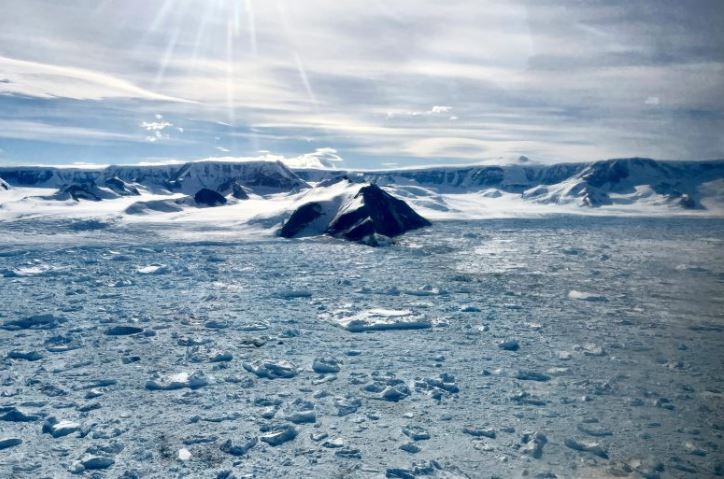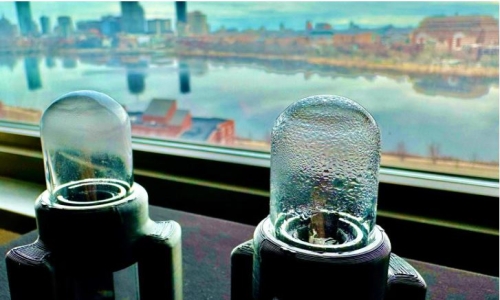


 10:57:24
10:57:24  2025-11-23
2025-11-23  22
22

Antarctica’s Hektoria Glacier collapsed at record speed, revealing how quickly ice loss could drive sea level rise.
A glacier on the eastern side of the Antarctic Peninsula has undergone the fastest ice retreat ever documented in modern times, according to a major study co-authored by Swansea University researchers.
Published in Nature Geoscience, the study reports that Hektoria Glacier lost nearly half its total length—around eight kilometers of ice—over just two months in 2023, a rate comparable to the rapid retreats that occurred at the close of the last ice age.
Role of bedrock and glacier shape in rapid ice loss
The research, led by the University of Colorado Boulder (CU Boulder) and including Swansea glaciologist Professor Adrian Luckman, found that the glacier’s retreat was accelerated by the underlying landscape.
Hektoria Glacier sat atop an ice plain, a flat expanse of bedrock located below sea level. Once the retreat began, this formation caused large portions of ice to detach rapidly, triggering a chain reaction of collapse.
The exceptional pace and magnitude of Hektoria’s ice loss may help scientists pinpoint other glaciers at risk of similar instability and guide future monitoring efforts.
Although Hektoria is relatively small by Antarctic standards—spanning about 115 square miles, just under the size of the city of Swansea—its sudden retreat serves as a serious warning. If glaciers of greater size experience comparable events, the impact on global sea level rise could be significant.
Expert insights on unprecedented retreat
Professor Adrian Luckman, co-author of the study, said: “Glaciers don’t usually retreat this fast. The circumstances may be a little particular, but this scale of ice loss shows what may happen elsewhere in Antarctica, where glaciers are lightly grounded and sea ice loses its grip.
“Although the paleo record indicates some very rapid retreats in the past, the pace of retreat of Hektoria Glacier and its neighbors is unprecedented in the observational record.
“This is the latest chapter in a sequence of events which started with the collapse of the Larsen B Ice Shelf 23 years ago, marking a landscape-changing event that offers insights into the potential future rates of glacier retreat elsewhere in Antarctica.”
Tracking the glacier’s movement using satellites and seismic data
Using satellite imagery and seismic data, the team tracked the glacier’s collapse in detail. They identified multiple grounding lines—points where the glacier shifts from resting on bedrock to floating on seawater—revealing the presence of an ice plain and underscoring Hektoria’s vulnerability to ocean-driven retreat.
Seismic instruments also recorded glacier earthquakes—small tremors triggered by sudden ice movement—during the retreat, evidence that the ice was grounded and that its loss directly contributed to global sea level rise.
Dr. Ted Scambos, a Senior Research Scientist at CU Boulder’s Earth Science and Observation Center, said: “This kind of lightning-fast retreat really changes what’s possible for other, larger glaciers on the continent. If the same conditions are set up in some of the other areas, it could greatly speed up sea level rise from the continent.”
The study highlights the urgent need for continued monitoring and international collaboration to better understand changes in Earth’s frozen regions.
Reality Of Islam |
|

Imagine bei

MIT en

An analysis

Engineers have achieved a major
 9:3:43
9:3:43
 2018-11-05
2018-11-05
10 benefits of Marriage in Islam
 7:5:22
7:5:22
 2019-04-08
2019-04-08
benefits of reciting surat yunus, hud &
 9:45:7
9:45:7
 2018-12-24
2018-12-24
advantages & disadvantages of divorce
 11:35:12
11:35:12
 2018-06-10
2018-06-10
 6:0:51
6:0:51
 2018-10-16
2018-10-16
 9:50:37
9:50:37
 2023-02-28
2023-02-28
 12:47:1
12:47:1
 2022-12-20
2022-12-20
 3:43:50
3:43:50
 2022-11-05
2022-11-05
a hero waters thirsty wild animals
 9:4:9
9:4:9
 2022-01-06
2022-01-06
 7:34:7
7:34:7
 2023-02-28
2023-02-28
 8:21:9
8:21:9
 2018-06-21
2018-06-21
 10:55:53
10:55:53
 2022-06-13
2022-06-13
 5:41:46
5:41:46
 2023-03-18
2023-03-18
| LATEST |